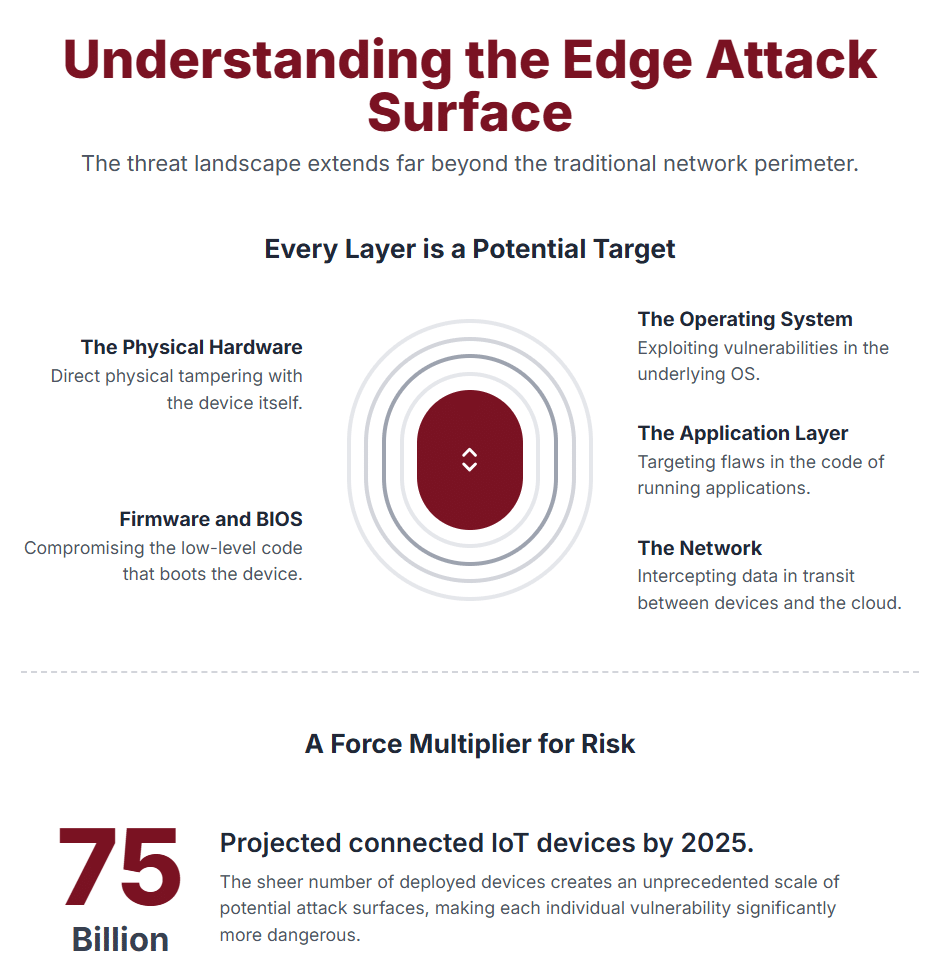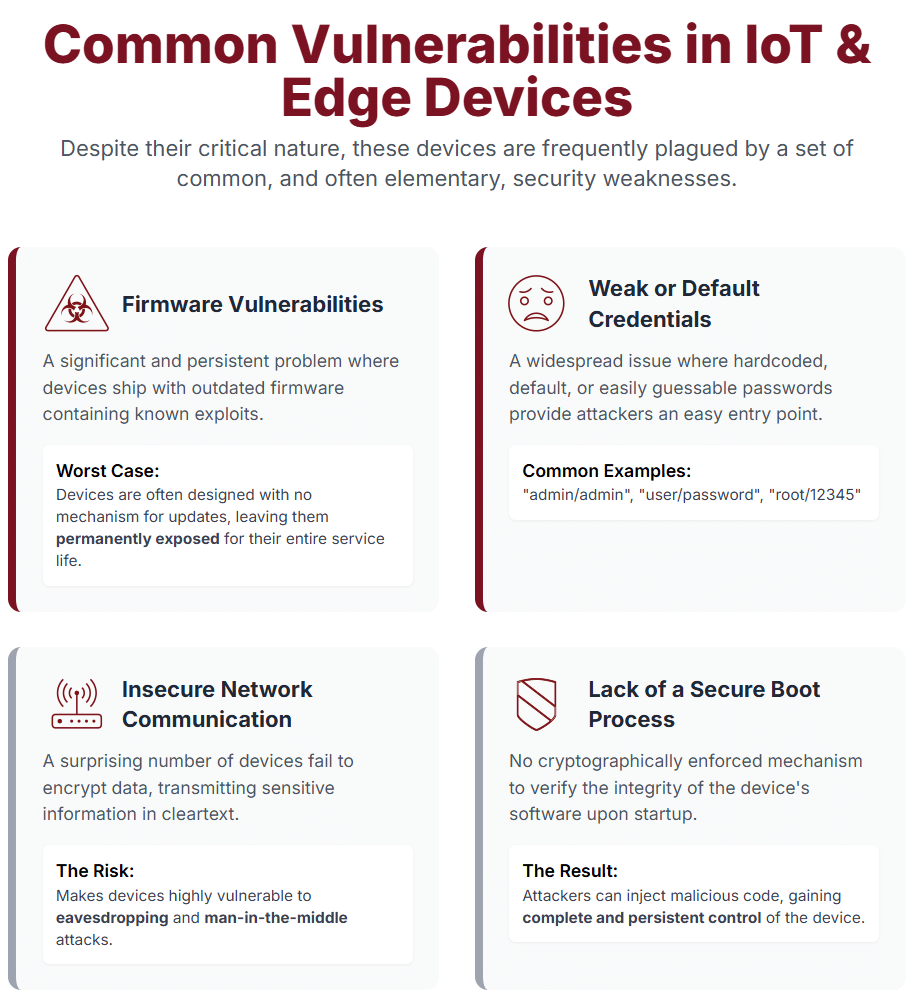Fortifying Edge Data Centers
Published on July 28, 2025,
by
Edge computing has emerged as a transformative force, bringing data processing closer to where it’s generated. This shift enhances speed and efficiency but also introduces a dramatically expanded attack surface. With billions of IoT and edge devices projected to be deployed globally, edge data center security is no longer optional, it is mission critical.
In this blog, we’ll explore the unique security challenges of edge environments, common vulnerabilities in IoT and edge devices, and some basic principles on how to implement a Zero-Trust model fortified by hardware-based security controls.

Unlike traditional data centers, edge environments are decentralized and often deployed in less secure, remote locations. This makes them more susceptible to a wide range of threats. The attack surface in an edge computing environment spans multiple layers:
- Physical Hardware: Devices can be physically tampered with, especially in unmonitored or public locations.
- Firmware and BIOS: These low-level systems are attractive targets because compromises here are persistent and hard to detect.
- Operating System: Vulnerabilities in the OS can be exploited to gain unauthorized access or control.
- Application Layer: Poorly coded applications can introduce exploitable flaws.
- Network: Data in transit between edge devices and the cloud is vulnerable to interception.
With an estimated 75 billion connected IoT devices by 2025, the scale of this attack surface is unprecedented. Each device represents a potential entry point for attackers.

Despite their critical role, many IoT and edge devices suffer from basic security flaws:
1. Firmware Vulnerabilities
Many devices ship with outdated firmware containing known vulnerabilities. Worse, some lack a mechanism for updates, leaving them exposed for their entire lifecycle.
2. Weak or Default Credentials
Hardcoded or default passwords are still shockingly common. These credentials are often published online, making it easy for attackers to gain access.
3. Insecure Network Communication
Some devices transmit sensitive data in cleartext, making them vulnerable to eavesdropping and man-in-the-middle attacks.
4. Lack of Secure Boot
Without a secure boot process, attackers can modify firmware and inject malicious code, gaining persistent control of the device.
To address these vulnerabilities, organizations should consider robust device management solutions. One such solution is Nlyte’s Device Management platform, which provides visibility, control, and security for edge and IoT devices. It helps ensure firmware is up to date, credentials are managed securely, and devices are monitored for anomalies.
Implementing a Zero-Trust Security Model at the Edge
The traditional "castle-and-moat" security model is ineffective in edge environments. Instead, organizations must adopt a Zero-Trust approach, which operates on the principle of “never trust, always verify.”
Key Principles of Zero Trust at the Edge:
Continuous Identity Validation
Every access request must be authenticated and authorized using strong identity mechanisms. Multi-factor authentication (MFA) is essential and can block over 99.9% of account compromise attacks.
Micro-segmentation
Dividing the network into isolated segments limits lateral movement. If one device is compromised, attackers cannot easily access others. This can reduce the attack surface by up to 90%.
Least Privilege Access
Users and devices should only have the minimum access necessary. This limits the potential damage from compromised accounts or devices.
Zero Trust is not a product—it’s a strategy. It requires a combination of policies, technologies, and cultural shifts to implement effectively.
Essential Security Controls: Secure Boot, HSMs, and Encryption
To support a Zero-Trust model, edge devices must be built on a foundation of strong, hardware-based security controls.
Secure Boot
Secure boot ensures that only trusted software is loaded during startup. It uses digital signatures to verify the integrity of firmware, OS, and applications. This creates a chain of trust from power-on to full operation.
Hardware Security Modules (HSMs) and Hardware Roots of Trust (HRoT)
These tamper-resistant components protect cryptographic keys used for authentication and encryption. Even if the OS is compromised, the keys remain secure.
End-to-End Encryption
All data must be encrypted both at rest and in transit. Use strong protocols like TLS to protect data moving across networks and ensure local storage is encrypted to prevent data theft.
Final Thoughts: Building Resilience at the Edge
Edge computing is revolutionizing industries—from manufacturing and healthcare to retail and smart cities. But with great power comes great responsibility. The decentralized nature of edge environments demands a new approach to security—one that is proactive, layered, and rooted in Zero Trust.
By addressing common vulnerabilities, implementing strong identity and access controls, and leveraging hardware-based security features, organizations can significantly reduce their risk exposure.
Strengthen Data Center Security with Nlyte’s Device Management Solution
